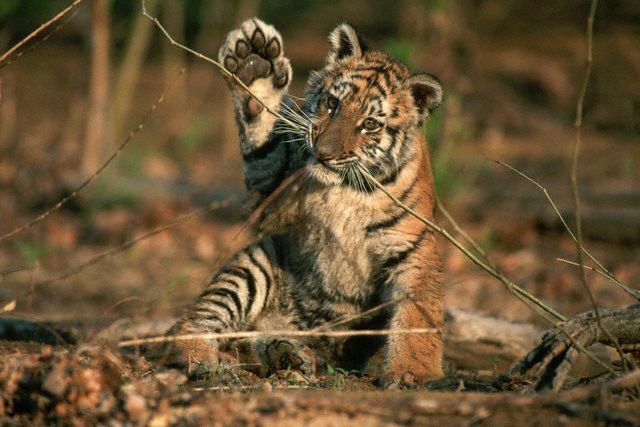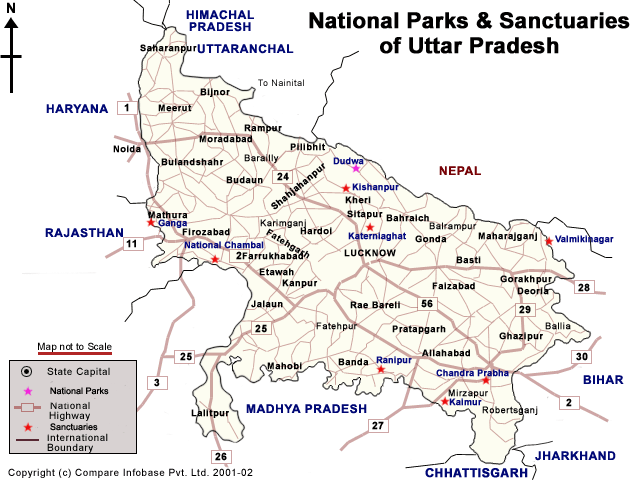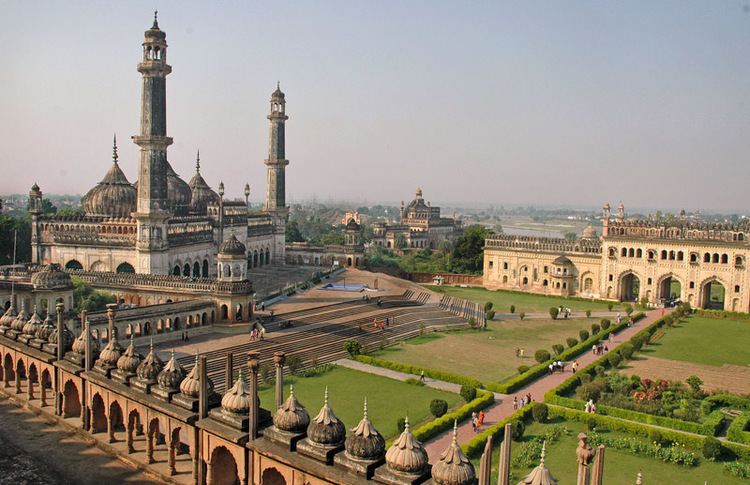Country | Area 7,680 km² Language spoken Hindi District Lakhimpur assam | |
 | ||
Map of Lakhimpur, Uttar Pradesh
Lakhimpur is a city and a municipal board in Lakhimpur Kheri district in the Indian state of Uttar Pradesh.
Contents
- Map of Lakhimpur Uttar Pradesh
- History
- Geography
- Government and politics
- Economy
- Agriculture
- Industry
- Education
- Climate
- Demographics
- Languages
- Tourism
- Naseeruddin Memorial Hall
- Eid Gaah Kheri
- Shiv Temple Gola Gokaran Nath
- Frog Temple
- Shiv Temple Devkali
- Transport
- Communication and radio stations
- Sister cities
- References

History

Traditions point to the inclusion of this tract in the realm of the Lunar race of Hastinapur, and several places are associated with episodes in the Mahabharata. The early history is, however entirely unknown. The northern part was held by Rajputs in the tenth century, and tradition relates that they dispossessed the Pāsīs (a Hindu cast)and other aboriginal tribes. Muslim rule spread slowly to this remote and in hospitable tract; and it was probably not before the fourteenth century that a chain of forts was constructed along the northern frontier to prevent the incursions of the sarkār of Khairābād in the Sūbah of Oudh.

The later history is merely that of the rise and decline of individual families, and is purely of local importance. When Rohilkhand was ceded to the British in 1801 part of this District was included in the cession, but it was restored to Oudh (See Awadh) after the Anglo-Nepalese War of 1814-16. On the annexation of Oudh in 1856 the west of the present area was formed into a District called Muhamdī (Now Mohmmadi) and then cast into Mallānpur, which also included part of Sitāpur.
A year later Muhamdī became one of the chief center of disaffection in northern Oudh. The refugees from Shāhjahānpur reached Muhāmdi on June 2, and two days later that place was abandoned; but the whole party, with few exceptions, were shot down on the way to Sītapur, and the survivors died or were murdered later at Lucknow.
The British officials at Mallānpur, with a few who had fled from Sītapur, escaped to Nepāl, where most of them died. No real attempt to recover the District was made till October 1858, but peace was restored before the end of that year. The headquarters of the single District then formed were moved to Lakhimpur shortly afterwards.
Geography
Lakhimpur is located at 27.95°N 80.77°E / 27.95; 80.77. It has an average elevation of 147 metres (482 feet).
It shares its boundaries with –
Its main rivers are Sharda, Ghagra, Koriyala, Ull, Sarayan, Chauka, Gomti, Kathana, Saryu and Mohana.
Government and politics
Economy
In 2006 the Ministry of Panchayati Raj named Lakhimpur Kheri one of the country's 250 most backward districts (out of a total of 640). It is one of the 34 districts in Uttar Pradesh currently receiving funds from the Backward Regions Grant Fund Programme (BRGF).
Agriculture
Known for its sugar cane industry, it satisfies a huge part of the world's sugar demands. Some of the biggest sugar mills are in the district. Bajaj sugar mill in Gola Gokarnath and Bajaj sugar mill in Palia Kalan and DSCL sugar mills (Ajbapur),kumbhi sugar mills kumbhi, (Mohammdi) are the four largest sugar mills in Asia. Balrampur Industries also runs its sugar mills from Lakhimpur. Lakhimpur is also famous for cottage industries of incense sticks.
Industry
The main industry which dominates Lakhimpur Kheri is the sugar industry. It houses various sugar industries ranging from small plants to big integrated sugar mills.There are many private, government and co-operative sugar mills in the region. Steel Authority of India Limited (SAIL) is setting up a steel processing unit in Behjam, Lakhimpur at an estimated cost of Rs 85 crore. The processing unit will have an installed capacity of 100,000 tonnes per annum and produce TMT (thermo mechanically treated) bars from input material sourced from SAIL’s integrated steel plants.
Education
Education is available at the Junior and Senior Basic Schools, Senior Secondary Schools and college level.
Lakhimpur Kheri has a majority of small schools with limited enrollments. However the bigger ones include St. Don Bosco's College and B.P.S. Public School. Other schools and colleges are Pt. Deen Dayal Upadhyaya Saraswati Vidya Mandir Inter College, Government Inter College, Govt Girls' Inter college, Dharm Sabha Inter college, Arya Kanya, St. John's School in Gola Gokarannath, Lucknow Public School, C.B. Singh Gaur Memorial School, Cane Growers Inter College, Greenfield Academy, Children's Academy, Ajmani International School, Kunwar Khuswaqt Rai, Adarsh Vidya Mandir, Saraswati Vidya Mandir, Paul International School and City Montessori Kheri.
Statistics
Climate
The climate is hot throughout the year except the rainy seasons. In winter, nights are very cold. Fog is very common in this season.
Demographics
According to the 2011 census Lakhimpur Kheri District has a population of 120,688.
Languages
Languages spoken here include Awadhi, a vernacular in the Hindi dialect continuum spoken by over 38 million people, mainly in the Awadh region.
Tourism
Dudhwa Tiger Reserve (DTR) has two core areas, Dudhwa National Park and Kishanpur Wildlife Sanctuary, which were merged in 1987. Dudhwa National Park is known as the first National Park of the state after the formation of Uttarakhand.
It is home to a large number of rare and endangered species including Tiger, Leopard cat, Rhinoceros (one-horned), Hispid hare, Elephants, Black deer, Swamp deer, etc.
A bird watchers' haven, Dudhwa is noted for its avian variety – about 400 species. Its swamps and several lakes attract varieties of waterfowl. Being close to the Himalayan foothills, Dudhwa also gets its regular winter visitors – the migratory water birds. The Banke Tal is perhaps the most popular spot for bird watchers. There are egrets, cormorants, herons and several species of duck, geese and teal.
Conservation History
The visit of Sir D.B. Brandis in 1860 to the area culminated in a 303 square miles (780 km2) forest area of the present day Dudhwa National Park being brought under the control of Government in 1861 for preservation. In Kheri District all the Sal and miscellaneous forests and grasslands in Kharigarh Pargana, between the Mohana and Suheli rivers, were included in the then North Kheri Forest Division. More areas were reserved for protection between 1867 and 1879 and added to the Division. The area of the Division was legally constituted as Reserved Forests in 1937.
The Sonaripur Sanctuary, comprising 15.7 km2, was created in 1958 to specifically protect swamp deer (Cervus duvaceli duvaceli). The area was too small and was later enlarged to 212 km2 and renamed as Dudhwa Sanctuary in 1968. Later, more area was added to the Sanctuary and in 1977, it was declared Dudhwa National Park. The total area of the Park was 616 km2 of which 490 km2 was the core zone and the balance of 124 km2 was a buffer zone.
The area was established in 1958 as a wildlife sanctuary. On 1 February 1977 wildlife sanctuary became a national park and after 11 years in 1988 it was established as a tiger reserve. Dudhwa Tiger Reserve lies on the India-Nepal border in the foothills of the Himalaya. Dudhwa Tiger Reserve was created in the year 1987–88 comprising Dudhwa National Park and Kishanpur Sanctuary (203.41 km2). With an addition of 66 km2 to the buffer zone in 1997, the present area of the Tiger Reserve is 884 km2. Distance from Lakhimpur railway station to Dudhwa is about 100 km by road. Sharda Dam and Deer Park are other major attractions of Lakhimpur.
Naseeruddin Memorial Hall
East India Company built Willoughby Memorial Hall in 1924 in the memory of Sir Robert William Douglas Willoughby, Deputy Commissioner of Kheri. On 26 April 1936, Willoughby Memorial Library was established. Freedom Fighter Naseeruddin Mauzi Nagar and Rajnarayan Mishra shot the Deputy Commissioner and they were later hanged by the colonial rulers during freedom struggle. Willoughby Memorial Hall was recently renamed as Naseeruddin Memorial Hall.
Eid Gaah, Kheri
The Eid Gaah is a beautiful mosque near the railway tracks between Lakhimpur and Kheri. It is a picturesque site and an architectural beauty.
Shiv Temple Gola Gokaran Nath
Shiv Temple of Gola Gokaran Nath is a temple dedicated to Lord Shiva. The Gola Gokaran Nath is also called Choti Kashi. It is the belief of the people that Lord Shiva was pleased with the penance (Tapasya) of Rawana (King of Lanka) and offered him a boon. Rawana requested the Lord Shiva to go to Lanka with him and leave Himalaya forever. The Lord Shiva agreed to go on condition that he should not be placed anywhere on the way to Lanka. If he were placed anywhere, he would settle at that place. Rawana agreed and started his journey to Lanka with the Lord on his head. When Rawana reached the Gola Gokaran Nath (then called Gollihara) he felt the need to urinate (a call of nature). Rawana offered some gold coins to a shepherd (who was none other than Lord Ganesha sent by deities) for placing the Lord Shiva on his head until he returned. The shepherd (Lord Ganesha) placed him on the land. Rawana failed to lift him up despite all his efforts. He pressed him on his head with his thumb in full anger. The impression of Rawana's thumb is still present on the Shivling. In the month of Chatra (April) a great fair is organised for one month known as Cheti-Mela.
Frog Temple
The unique Frog Temple lies at Oel town, 12 km from Lakhimpur on the route from Lakhimpur to Sitapur. It is the only one of its kind in India based on Manduk Tantra. It was built by the former king of Oel State (Lakhimpur Kheri district) between 1860 and 1870. It is dedicated to Lord Shiva. This temple is built at the back of a large frog. The Temple is constructed within an octagonal lotus. The Shivling installed in the temple was brought from the Banasur Prati Narmdeshwar Narmada Kund. The main gate of the temple opens in the east and another gate is in the south. The architecture of this temple is based on Tantra Vidya.
Shiv Temple Devkali
It is said that Janmejayi son of king Prikshit organised famous Nag Yagya at this place. It is believed that snakes do not enter houses where the holy soil of this temple is present. This temple is dedicated to Lord Shiva. It is also believed that the Devakali, daughter of Lord Brahama (Founder of the world) did a hard penance (Tapsya) at this place. After the name of Lord Brahama's daughter this place is known as Devakali.
Transport
Lakhimpur city is 124 km. from the state capital Lucknow. It can be easily reached by train (meter gauge) or UPSRTC Bus services.
By Road: Delhi – Muradabad – Bareilly – Shahjahanpur – Gola Gokaran Nath – Lakhimpur (425 km approx)
By Train: Delhi – Muradabad – Bareilly and then Bareilly City – Pilibhit – Mailani – Gola Gokaran Nath – Lakhimpur
By Train: Delhi – Lucknow and Lucknow – Sitapur – Lakhimpur
By Train: Delhi – Muradabad – Bareilly – Shahjahanpur (NR) and then by road to Lakhimpur via:Gola Gokaran Nath 102 km
By Road: Lucknow – Sitapur – Lakhimpur 135 km
By Train: Lucknow – Sitapur – Lakhimpur (NER)
Zafar Ali Naqvi and Jitin Prasada promised of getting the meter gauge railway track of the district converted to broad gauge during 2009 Parliamentary elections. Once this is accomplished, it would make Lakhimpur easily accessible from Delhi and other major cities in India.
Railway Budget 2010 (Gauge conversion – Lakhimpur)
Snippet from Railway Budget presented by Railway Minister Mamata Banerjee in the Parliament on 24 February 2010 –
On the basis of requests received from the Hon’ble Members, State Government and others, the following surveys are proposed to be taken up:
Lucknow-Sitapur-Pilibhit Meter Gauge line.
Communication and radio stations
Communication networks
All prominent tele-communication network providers in India offer their services in Lakhimpur. The city of Lakhimpur falls under "Uttar Pradesh Central telecom Circle". Calls from the city of Lakhimpur to neighbouring districts including the rest of the area in the Uttar Pradesh and "Uttarakhand telecom circle" are considered to be local.
Radio services
Radio is one of the modes of entertainment in Lakhimpur. Radio services available are:
Sister cities
Sitapur district
